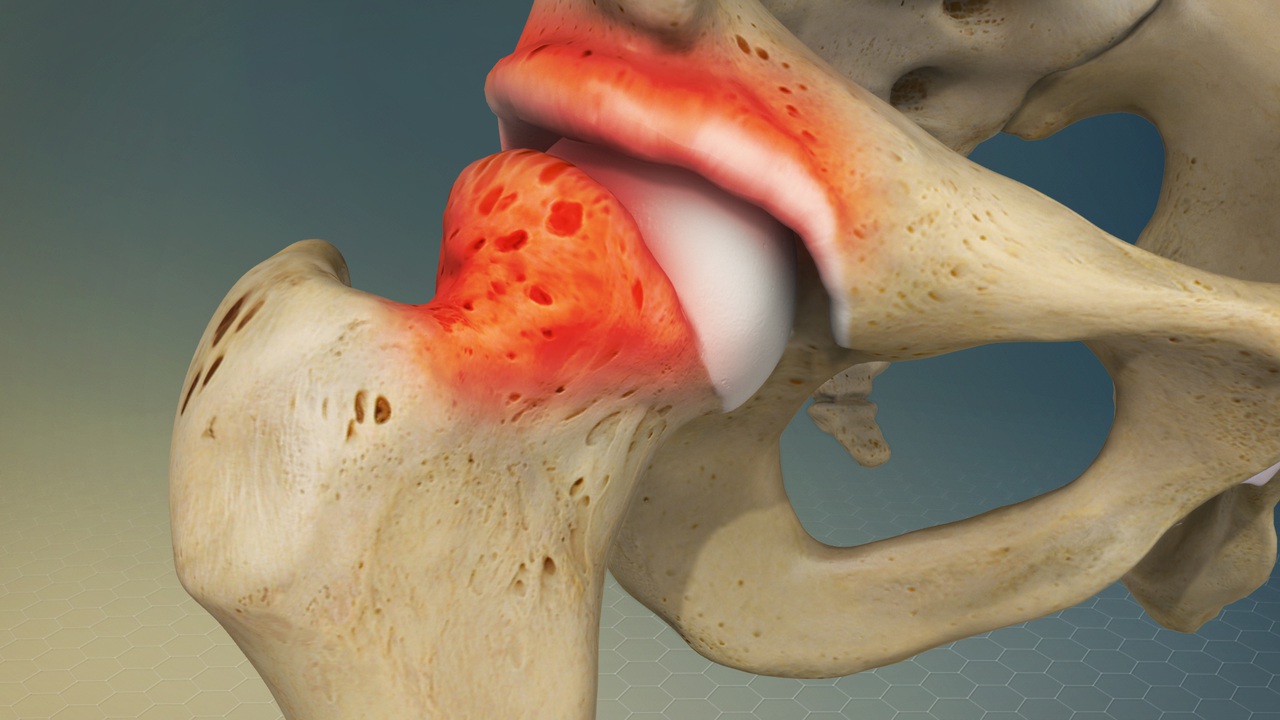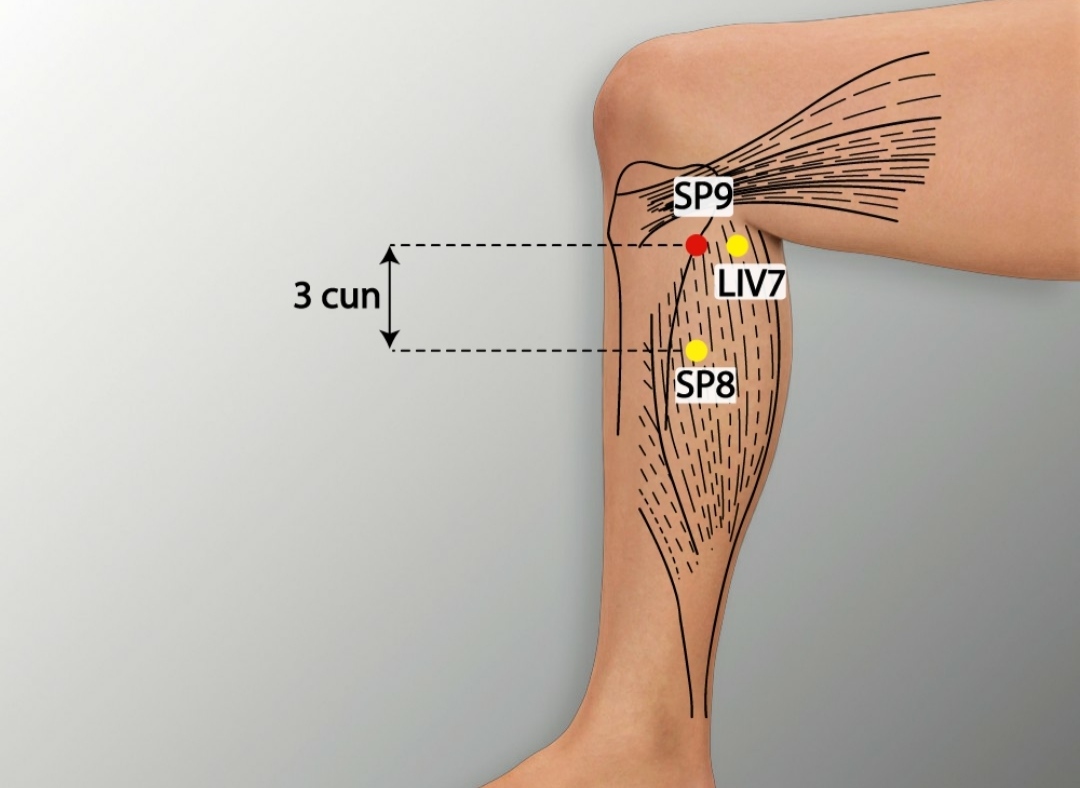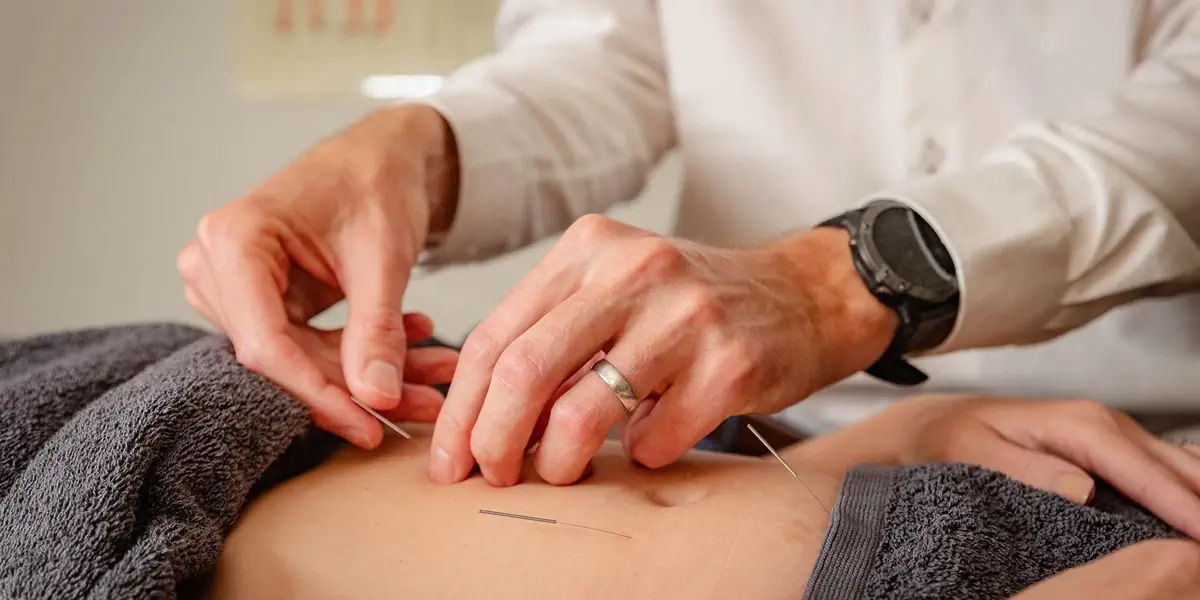Femoroacetabular Impingement and Acupuncture Treatment in Tokyo
Femoroacetabular impingement (FAI), also known as hip impingement, is a condition where abnormal contact between the femoral head (ball) and the acetabulum (socket) of the hip joint causes pain, restricted movement, and potential joint damage. This mechanical issue can lead to cartilage wear, labral tears, and, if untreated, osteoarthritis. FAI is increasingly recognized as a common cause of hip pain, particularly in young, active individuals and athletes.
FAI arises from structural abnormalities in the hip joint, which may be congenital or acquired. Symptoms include hip or groin pain, stiffness, and difficulty with certain movements like squatting or twisting. Conventional treatments range from physical therapy and anti-inflammatory medications to surgical interventions like arthroscopy. However, acupuncture, a traditional Oriental medicine (TOM) practice, is gaining attention as a non-invasive, complementary therapy for managing FAI symptoms.
This article provides an in-depth exploration of FAI, its causes, symptoms, and diagnosis, followed by a detailed discussion of how acupuncture can alleviate symptoms, the key acupoints used, and how it integrates with other treatments. Whether you’re seeking relief from hip pain or exploring alternative therapies, this guide offers valuable insights.
- What Is Femoroacetabular Impingement?
- Definition and Types
- Causes and Risk Factors
- Symptoms of FAI
- Diagnosis and Conventional Treatments
- Acupuncture: An Overview
- How Acupuncture Treats Femoroacetabular Impingement
- 1. Pain Relief
- 2. Reducing Inflammation
- 3. Improving Range of Motion
- 4. Strengthening Supporting Muscles
- 5. Addressing Emotional Stress
- Scientific Evidence
- Key Acupoints for Femoroacetabular Impingement
- 1. GB30 (Huantiao)
- 2. GB29 (Juliao)
- 3. BL54 (Zhibian)
- 4. ST31 (Biguan)
- 5. GB34 (Yanglingquan)
- 6. SP9 (Yinlingquan)
- 7. LI4 (Hegu)
- 8. Local and Ashi Points
- Treatment Protocol
- Benefits and Risks of Acupuncture for FAI
- Benefits
- Risks
- Integrating Acupuncture with Other Treatments
- Who Can Benefit from Acupuncture for FAI?
- Finding a Qualified Acupuncturist
- Conclusion
- FAQs About Femoroacetabular Impingement and Acupuncture
What Is Femoroacetabular Impingement?
Definition and Types
Femoroacetabular impingement occurs when the bones of the hip joint abnormally rub against each other, causing damage to the cartilage or labrum (a ring of cartilage around the acetabulum). This impingement restricts the hip’s normal range of motion and can lead to pain and joint degeneration.
Maybe You Need:
There are three main types of FAI:
- Cam Impingement: The femoral head is misshapen, often with an irregular bump or non-spherical shape, causing it to jam into the acetabulum during movement.
- Pincer Impingement: The acetabulum extends too far over the femoral head, pinching the labrum or cartilage.
- Combined Impingement: A combination of cam and pincer deformities, which is the most common presentation.
Causes and Risk Factors
FAI results from structural abnormalities in the hip joint, which may be present at birth or develop over time. Key causes and risk factors include:
- Genetics: Congenital hip deformities, such as a shallow acetabulum or irregular femoral head, increase FAI risk.
- Repetitive Activities: Sports involving repetitive hip flexion, rotation, or high-impact movements (e.g., soccer, hockey, or dance) can exacerbate or trigger FAI.
- Injury or Trauma: Previous hip injuries, such as fractures or dislocations, may alter joint mechanics.
- Developmental Issues: Conditions like slipped capital femoral epiphysis (SCFE) in adolescence can lead to FAI.
- Lifestyle Factors: Poor posture, weak hip muscles, or excessive sitting may contribute to joint stress.
Symptoms of FAI
Symptoms of FAI vary depending on the type and severity of impingement. Common signs include:
- Hip or Groin Pain: Dull, aching, or sharp pain, often worsened by activity, prolonged sitting, or twisting motions.
- Stiffness: Reduced range of motion, particularly during flexion, rotation, or abduction.
- Clicking or Locking: Sensations of catching or popping in the hip, sometimes audible.
- Limping: An altered gait due to pain or restricted movement.
- Referred Pain: Discomfort radiating to the lower back, buttocks, or thighs.
- Weakness: Weak hip muscles, leading to compensatory strain on other joints like the knees or back.
Symptoms may be intermittent or progressively worsen, particularly if untreated. FAI can also mimic other conditions like hip dysplasia or hernias, making accurate diagnosis challenging without imaging.

Diagnosis and Conventional Treatments
Diagnosis of FAI typically involves a combination of a Physical Exam:
- Physical Exam: Assessing hip range of motion, strength, and pain with specific tests like the impingement test (e.g., flexing and rotating the hip).
- Imaging: X-rays to identify bone abnormalities, MRI to evaluate cartilage or labrum damage, or CT scans for detailed bone structure analysis.
- Diagnostic Injections: Injecting anesthetic into the hip joint to confirm FAI as the pain source.
Conventional Treatments:
- Conservative Management: Physical therapy to improve hip strength and flexibility, anti-inflammatory medications (NSAIDs), or corticosteroid injections for pain relief.
- Activity Modification: Avoiding high-impact activities that aggravate symptoms, such as deep squatting or pivoting sports.
- Surgical Options: Arthroscopic surgery to reshape the femoral head or acetabulum, repair labral tears, or remove damaged cartilage. In severe cases, total hip replacement may be considered.
While these treatments can be effective, they may not suit everyone due to invasiveness, recovery time, or potential side effects. Acupuncture offers a complementary or alternative option for managing FAI symptoms.
Acupuncture: An Overview
Acupuncture, a cornerstone of traditional Oriental medicine (TOM), involves inserting fine, sterile needles into specific points on the body, known as acupoints, to restore balance and promote healing. TOM posits that the body’s vital energy flows through meridians (energy pathways). Blockages or imbalances in Energy can cause pain or illness. Acupuncture aims to regulate Energy flow, influencing the nervous system, muscles, and connective tissues.
Modern science suggests acupuncture works by:
- Stimulating endorphin release, the body’s natural painkillers.
- Modulating the nervous system to dampen pain signals.
- Enhancing blood flow to promote tissue repair.
- Reducing inflammation by regulating cytokines.
Acupuncture is widely used for musculoskeletal conditions, including FAI, due to its ability to address pain, stiffness, and inflammation without invasive procedures.
How Acupuncture Treats Femoroacetabular Impingement
Acupuncture provides a holistic approach to managing FAI by targeting pain, improving joint function, and addressing underlying imbalances. Below are the key ways acupuncture helps:
1. Pain Relief
Chronic hip or groin pain is a primary complaint in FAI. Acupuncture stimulates the release of endorphins and serotonin, reducing pain perception. By targeting acupoints around the hip and along related meridians, it can alleviate discomfort in the hip, groin, and surrounding areas.
2. Reducing Inflammation
Inflammation plays a significant role in FAI, contributing to cartilage and labral damage. Acupuncture may decrease pro-inflammatory cytokines (e.g., TNF-α, IL-6) while promoting anti-inflammatory responses. This helps reduce swelling and protect the joint from further degeneration.
3. Improving Range of Motion
Restricted movement is common in FAI due to impingement and muscle tightness. Acupuncture enhances blood circulation to the hip joint, delivering oxygen and nutrients to tissues. This can relax tight muscles, improve flexibility, and reduce mechanical restrictions.
4. Strengthening Supporting Muscles
Weak or imbalanced hip muscles exacerbate FAI symptoms. Acupuncture can stimulate motor points in muscles like the gluteus medius or quadriceps, improving strength and coordination. This complements physical therapy by enhancing muscle activation.
5. Addressing Emotional Stress
Chronic pain from FAI can lead to stress, anxiety, or depression, which amplify physical symptoms. Acupuncture’s calming effect on the nervous system reduces stress hormones like cortisol, promoting relaxation and overall well-being.

Scientific Evidence
Research supports acupuncture’s efficacy for musculoskeletal pain. A 2019 systematic review in The Journal of Pain found acupuncture effective for chronic joint pain, including hip-related conditions. A 2021 study in Acupuncture in Medicine reported improved hip function and reduced pain in patients with hip osteoarthritis treated with acupuncture. While direct studies on FAI are limited, these findings suggest acupuncture’s potential for similar conditions.
Key Acupoints for Femoroacetabular Impingement
Acupuncture treatment for FAI involves selecting acupoints based on TOM principles and the patient’s symptoms. Below are key acupoints commonly used, their locations, and benefits. These points are typically stimulated with needles, but electroacupuncture or acupressure may also be applied.
1. GB30 (Huantiao)
- Location: On the buttock, one-third of the way from the greater trochanter to the sacrum.
- Benefits: Relieves hip pain, sciatica, and lower back stiffness. Improves hip joint mobility and stability.
- TOM Role: On the Gallbladder meridian, GB30 regulates Energy and blood flow to the hip, clearing stagnation.

2. GB29 (Juliao)
- Location: Midway between the anterior superior iliac spine (ASIS) and the greater trochanter.
- Benefits: Reduces hip joint pain, inflammation, and muscle tension. Enhances joint stability.
- TOM Role: Also on the Gallbladder meridian, GB29 promotes circulation and alleviates blockages in the hip.
3. BL54 (Zhibian)
- Location: On the buttock, 3 cun lateral to the sacral hiatus.
- Benefits: Alleviates hip and gluteal pain, relaxes tight muscles, and supports lower body mobility.
- TOM Role: On the Bladder meridian, BL54 clears dampness and heat, reducing inflammation.
4. ST31 (Biguan)
- Location: On the anterior thigh, below the ASIS, in a depression when the thigh is flexed.
- Benefits: Relieves hip and thigh pain, strengthens leg muscles, and improves joint function.
- TOM Role: On the Stomach meridian, ST31 activates Energy and blood flow to the lower limbs.
5. GB34 (Yanglingquan)
- Location: Below the knee, in a depression anterior and inferior to the head of the fibula.
- Benefits: Reduces muscle spasms, improves tendon flexibility, and supports joint health.
- TOM Role: The “influential point for tendons,” GB34 strengthens connective tissues around the hip.
6. SP9 (Yinlingquan)
- Location: On the inner leg, below the knee, in a depression along the medial border of the tibia.
- Benefits: Reduces inflammation, alleviates hip and knee pain, and improves circulation.
- TOM Role: On the Spleen meridian, SP9 clears dampness and supports fluid balance in joints.

7. LI4 (Hegu)
- Location: On the hand, in the webbing between the thumb and index finger.
- Benefits: Provides systemic pain relief, reduces stress, and enhances overall Energy flow.
- TOM Role: On the Large Intestine meridian, LI4 is a powerful point for pain management and relaxation.
8. Local and Ashi Points
- Location: Tender points around the hip joint, identified during examination.
- Benefits: Directly target localized pain and inflammation.
- TOM Role: Ashi points address specific areas of stagnation and discomfort.
Treatment Protocol
A typical acupuncture session for FAI includes:
- Assessment: The acupuncturist evaluates symptoms, medical history, and TOM diagnosis (e.g., Energy stagnation, blood stasis).
- Point Selection: 6–12 acupoints are chosen, combining local (hip) and distal (e.g., knee, hand) points.
- Needle Insertion: Sterile, single-use needles are inserted to a depth of 0.5–2 inches, depending on the point.
- Stimulation: Needles may be manually manipulated or connected to an electroacupuncture device for 20–30 minutes.
- Frequency: 1–2 sessions per week for 6–12 weeks, tailored to symptom severity.
Electroacupuncture is particularly effective for FAI, as it enhances stimulation and promotes muscle relaxation. Moxibustion (warming acupoints with mugwort) may be used to improve circulation and reduce stiffness.
Benefits and Risks of Acupuncture for FAI
Benefits
- Non-Invasive: Minimal risk compared to surgery, with no recovery downtime.
- Holistic: Addresses physical pain, inflammation, and emotional stress.
- Customizable: Treatments are tailored to individual symptoms and TOM patterns.
- Complementary: Enhances the effects of physical therapy or medications.
- Low Side Effects: Safe when performed by a licensed practitioner.
Risks
- Mild Discomfort: Temporary soreness or bruising at needle sites.
- Infection: Rare with sterile, single-use needles.
- Contraindications: Avoided in patients with bleeding disorders or on blood thinners without medical clearance.
- Variable Efficacy: Results depend on practitioner expertise and patient condition.
Integrating Acupuncture with Other Treatments
Acupuncture is most effective when combined with a comprehensive treatment plan. Complementary approaches include:
- Physical Therapy: Strengthens hip muscles, improves joint mechanics, and prevents further impingement.
- Exercise: Low-impact activities like swimming, yoga, or Pilates enhance flexibility and reduce joint stress.
- Nutrition: Anti-inflammatory diets rich in omega-3s, antioxidants, and vitamin D support joint health.
- Weight Management: Maintaining a healthy weight reduces pressure on the hip joint.
- Medications: NSAIDs or corticosteroid injections for acute pain, used sparingly alongside acupuncture.
Patients should work with their healthcare provider to integrate acupuncture into a personalized treatment plan.
Who Can Benefit from Acupuncture for FAI?
Acupuncture is suitable for:
- Individuals with mild to moderate FAI seeking pain relief and improved mobility.
- Patients preferring non-invasive treatments or ineligible for surgery.
- Those with coexisting conditions like osteoarthritis or lower back pain.
- Individuals experiencing stress or anxiety related to chronic pain.
Acupuncture may not be sufficient as a standalone treatment for severe FAI requiring surgical correction. Consult a healthcare provider to determine suitability.

Finding a Qualified Acupuncturist
To ensure safe and effective treatment:
- Choose a licensed acupuncturist certified by a recognized body (e.g., NCCAOM in the U.S.).
- Verify their experience with musculoskeletal conditions like FAI.
- Share your medical history, including medications and conditions, to avoid complications.
- Confirm the use of sterile, single-use needles to prevent infection.
Conclusion
Femoroacetabular impingement is a common cause of hip pain that can significantly impact mobility and quality of life. While conventional treatments like physical therapy and surgery are effective, acupuncture offers a non-invasive, holistic alternative for managing symptoms. By targeting key acupoints like GB30, GB29, and BL54, acupuncture can reduce pain, inflammation, and stiffness while improving hip function. When combined with other therapies, it provides a comprehensive approach to FAI management.
If you’re considering acupuncture, consult a licensed practitioner to develop a tailored treatment plan. With consistent sessions and a multidisciplinary approach, acupuncture can help you alleviate FAI symptoms, enhance mobility, and improve overall well-being.
FAQs About Femoroacetabular Impingement and Acupuncture
- How many acupuncture sessions are needed for FAI?
Typically, 6–12 sessions over 1–3 months, with adjustments based on symptom severity. - Does acupuncture hurt?
Most patients feel minimal discomfort, often a slight pinch or tingling sensation. - Can acupuncture cure FAI?
Acupuncture cannot correct structural abnormalities but can significantly reduce pain and improve function. - Is acupuncture safe for athletes with FAI?
Yes, when performed by a qualified practitioner, it’s safe and can complement rehabilitation programs. - How does acupuncture compare to surgery for FAI?
Acupuncture is non-invasive and focuses on symptom relief, while surgery addresses structural issues. Combining acupuncture with conservative treatments may delay or avoid surgery in some cases.
Fuji Wellness:
- Address: 132-0031 Matsushima 1-chome, 21-14, Tokyo, Japan
- Chat with us: Click here
- Email: sunnyphamsensei@gmail.com



